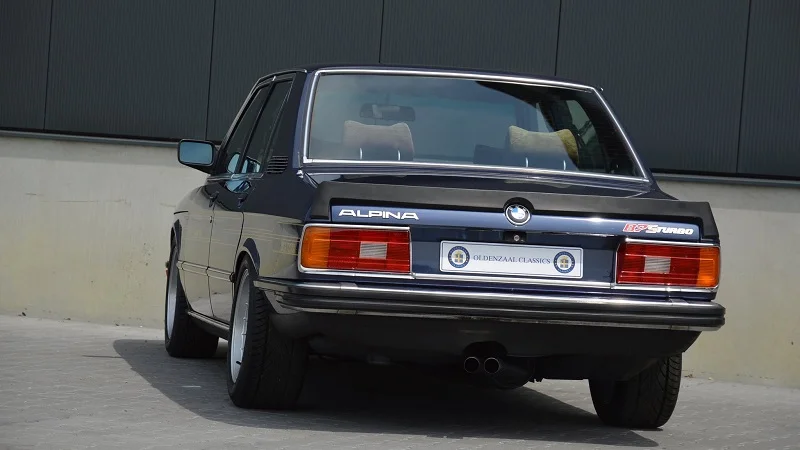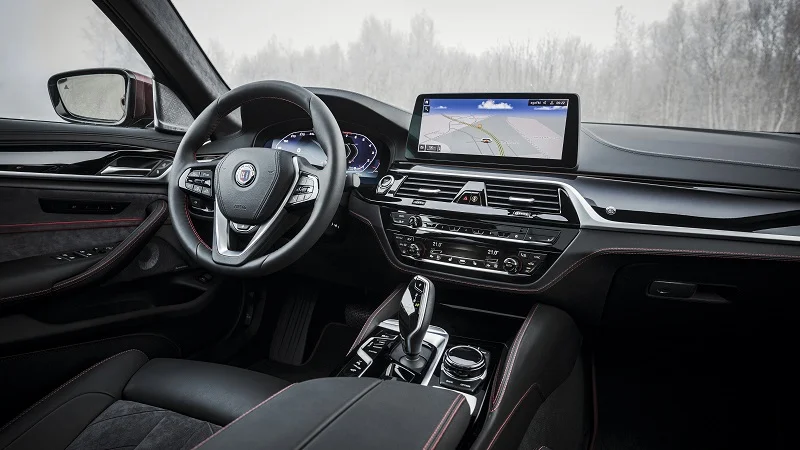About 60 miles west of the BMW HQ, in the quaint little district of Ostallgäu, lies an automotive manufacturer that not a lot of people may be familiar with – Alpina. For the last 55 years, the small team of designers and engineers at BMW Alpina have been working closely with the German giant from Bavaria, creating bespoke pieces of engineering.
Simply put, Alpina takes select BMW and Mini models and cranks up the performance and luxury on these cars to eleven. The resulting BMW Alpina offerings are usually sought by a small circle of connoisseurs – justifiably so, considering the price they demand.

The Story So Far
Burkhard Bovensiepen, the man who founded Alpina, comes from a family of industrialists. In the early 1960s, he decided against joining the family’s typewriter business to pursue his interests in tuning cars – BMW, in particular.
The company’s roots can be traced back to 1962 when Burkhard developed a Weber dual carburetor for the BMW 1500. The carb performed exceptionally well and boosted horsepower by 15 percent. Even Paul G. Hahnemann, then sales head of BMW, was impressed. A testament to the product’s quality came a couple of years later when BMW said that vehicles fitted with the system would still benefit from the factory warranty.
The Initial Years
However, it was only in 1965 that the Alpina we know of today was officially formed. At the time, the company had just 8 employees and operated out of the typewriter factory. Initially, the company focused on tuning carburetors and modifying crankshafts to extract as much power as possible from the BMW engines.
The company’s work was slowly gaining the attention of enthusiasts, but it wasn’t until 1970 that the name came to prominence. After competing in the European Touring Car Championship since 1968, Alpina won the title in 1970. The company also won the German Hillclimb Championship and the iconic Spa 24 Hours in the same year.
Alpina formally withdrew from racing in 1988 to shift its focus solely on producing cars for the public.

The BMW Alpina collaboration
In 1983, the company was registered with the German Federal Ministry of Transport as an automobile manufacturer. This allowed Alpina to operate as a company would, and the cars they worked on were now branded and sold as Alpinas and not BMWs. Interestingly, an Alpina can be serviced at a BMW dealership, and some even sell specific models.
As mentioned above, the two companies work very closely in the production of a car. Alpina first upgrades the engine by hand and sends it to BMW, who mount it into the vehicle. This vehicle then makes its way back to Alpina, who painstakingly work on the interiors, by hand, in minimal numbers.
In recent years, Alpina has also started making improvements to the transmission.
What Sets Alpina Apart From the M Division?
It might seem like Alpina is doing the same thing to BMW cars that the M Division does, but it isn’t the case. To put it simply, BMW’s M Division takes the company’s racing DNA and builds a new car from the ground up – it’s a race car that made its way to the street. Or at least that was the case for the original E30 M3. On the other hand, Alpina focuses on providing customers with a highly luxurious automobile that isn’t a slouch – they work on upgrading what’s already there.
While the M Division makes cars that are outright hooligans meant for the track, Alpina tuned models are meant for touring and are tuned for higher torque and a more leisurely experience.
For example, consider the BMW E60 5-series: the M-counterpart of this car, the M5, is powered by a naturally-aspirated, 5.0L, V10; meanwhile, the BMW Alpina based on the same model uses a supercharged 4.4L V8 that produces almost the same power, but more torque, in comparison to the stock car.

Alpina also sets itself apart from the M Division by producing cars that the latter may not be inclined to. Take the example of the Alpina B5. Based on the present-day 5-series estate, the B5 is essentially the estate iteration of the M5. In fact, it’s almost just as quick as the M5 Competition. It’s tuned for sportier performance, has better interiors, and is a much more rounded and capable machine.
BMW Alpina Models You Can Get Today
BMW Alpina models that are available today include the D3 S and B3, based on the BMW F30/F31; the XD3 and XD4, based on the BMW X3 and X4, respectively; the D5 S and B5, based on the BMW G30/G31 5 Series; and the B7, based on the BMW G12 7 Series.
If you’re looking for a bigger car (and can afford to get your hands on one), you have the option of the XB7, based on the X7, or the B8, that finds its roots in the BMW 8 Series Gran Coupé.
A Class Apart
BMW isn’t the only manufacturer out there that has an external tuning company work on its products. Mercedes has Brabus, Audi has ABT, Jaguar has Lister, and the list goes on. However, the relationship between BMW and Alpina runs a lot deeper than what the other manufacturers share with their counterparts.

Today, Burkard Bovensiepen has taken a back seat and lets his two sons – Andreas and Florian – handle the company’s day-to-day affairs. The five-and-a-half-decade-old relationship with BMW is as strong as ever, but an air of uncertainty looms in the distance.
Adapting to New Trends
The twin-turbo V8s that the company has specialized in for years are slowly dying and giving way to a wave of hybrid cars.
There are also stricter CO2 emission norms that companies now have to adhere to. Starting as much performance as possible while still keeping emissions in check is an incredibly complex task.
As the world transitions to EVs, the craftsmanship that makes Alpina who they are will fade unless the company adapts. They will have to conform to the direction the industry is heading in, and only time will tell how it manages to do so.





